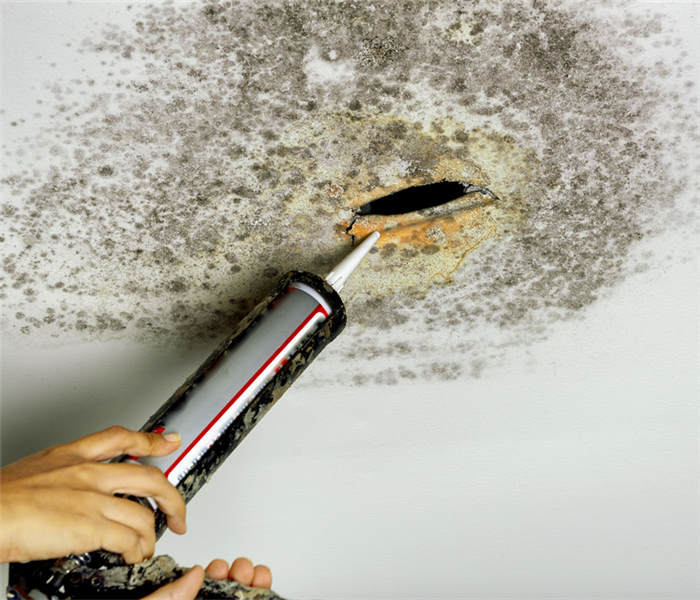Where Mold Grows
9/10/2021 (Permalink)
As any homeowner in Carpentersville, IL, would likely agree, the prospect of mold damage is an unwelcome one. With over 100,000 known types of fungi in existence the world over and millions of microscopic spores in the air, its presence on organic materials is commonplace. However, there are measures that can help to impede its often speedy growth.
Moisture is Key
Simply put, mold cannot grow without moisture, both indoors and outdoors. To prevent mold growth in a home, follow these practices:
• Keep the humidity below 45%.
• Ventilate kitchens, bathrooms, and laundry rooms.
• Repair leaks promptly.
• Dry and clean areas where flooding has occurred.
• Conduct periodic inspections of areas where moisture can collect.
Besides moisture, mold requires a porous surface on which to grow and digest nutrients. Mold can quickly colonize common household substances such as paper, wood, cardboard, ceiling tiles, paint, insulation, and fabrics. It can even grow in the dust.
Remediation is Available
Because of the difficulty of effective mold removal, it is wise to consult a professional remediation service to address mold damage. Unlike mildew growth, which is superficial and relatively easy to remove with a scrub brush and a variety of household cleaners, mold infiltrates surfaces. That makes its removal more of a challenge, and some materials, such as drywall and carpet, are likely to require replacement rather than cleaning. The first step, however, is to isolate and repair the source of moisture that has given mold its foothold. Without removing the source of moisture, the likelihood of regrowth is substantial.
Vigilance is part and parcel of homeownership. Simple but consistently performed visual inspections can go a long way in heading off mold damage and other threats to the safety and aesthetics of a home. In the event of a leak or flood, focus efforts on getting all affected areas thoroughly dry as quickly as possible.

 24/7 Emergency Service
24/7 Emergency Service
